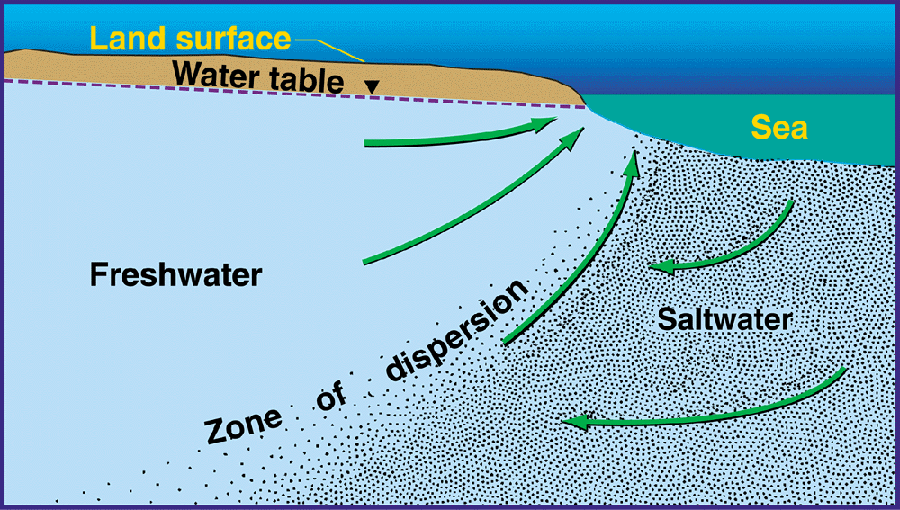India waterportal’s data finder has over 300 datasets. A non-data or non-analytics person can feel overwhelmed trying to pull out important information and understand it. A data story will help do just that. It will show you the data, explain the analysis behind it and present it visually so that you can find patterns, ask questions and reach conclusions.
Sea water has regularly intruded into coastal areas of Goa creating some impact to the available groundwater. Due to increased tourism, there has been a huge amount of development in Goa, a lot of it unmonitored. Famous for its beaches, art, wildlife and exciting water sports, Goa is facing a shortage of water resources.
Coastal tracts of Goa are rapidly being transformed into settlement areas. Poor water supply has encouraged people to find their own source of water by digging or boring a well. During the last decade, huge amounts of water have been removed from the ground by builders, hotels and other tourist establishments. This sort of exploitation in a coastal area can lead to problems regarding water quality. This phenomenon is called sea water intrusion. Our first data feature is on a report titled ‘Ground water Hydrology’, that simulates this intrusion.
What is seawater intrusion
Sea water intrusion means the displacement of saltwater into freshwater (groundwater) as a result of excessive construction activities near the sea coast. Freshwater is pure while seawater contains impurities. Thus seawater can displace freshwater as it is denser than the former. In coastal areas like Goa, continuous withdrawal of groundwater near the sea is making the zone of dispersion/ displacement increase day by day, which can lead to contamination of drinking water and severe health diseases.
How does this affect groundwater?
Saltwater contains excessive chloride, which is harmful for humans. When chloride enters the body as a result of skin contact or by swallowing, it reacts with the water to produce acids which are corrosive in nature and which can damage cells and tissues. Chloride also has bad effects on the environment. It produces leafburn and adversely affects crops such as tomato, cabbage and cucumber. Also, high concentrations of Sodium ion, which is found in seawater along with Chloride ions can contribute to heart disease and blood pressure. Increase of metals in the groundwater due to seawater intrusion prevents the distribution of oxygen and nutrients in the water which affects aquatic life in the region. Sea water doesn’t support irrigation, crop production or consumption.
Datasets
The following data has been used for analysis:
- Annual Rainfall values at Panaji from 1983 to 2002
- Observation well data (Data of wells: quality and concentration of elements)
- Ground water analysis data
Additional questions for the datasets present in the report
The attached seawater intrusion report provides rainfall data of Panaji for 20 years (1984 to 2003). We have performed a simple visualization on the annual rainfall values provided in the report. (see figure 1)
Comparison of India Water Portal rainfall data with National Institute of Hydrology data
Figure 2 compares the rainfall data of Goa according to the India Water Portal with the data present in the report. India Water Portal data has been obtained from the Indian Meteorological Department (IMD), Pune.
One reason why both the data sets differ could be that the National Insitute of Hydrology report has predicted the rainfall of Goa on the basis of rainfall in Panaji whereas the India Water Portal includes the rainfall data of the complete state based on the Indian Meteorology Department. Considering that Panaji receives more than 95% of the rainfall in Goa, the visualization should not vary so much.
The datasets in the report can also be used to analyze ground water recharge in Goa. Additionally, it could help come up with various options to curb the saltwater intrusion such as crystallization technology, which is a new cost efficient and environmentally friendly technology to reduce or prevent salt-water intrusion into fresh water aquifers. One can also think of analyzing deeply the zone of dispersion between saltwater and seawater at various regions within Goa and the effects of sea water intrusion on agriculture, groundwater quality and declining water tables.
Conclusions
The analysis shows that seawater intrusion in Bardez taluk of North Goa is confined only to 290 meters from the coast under normal rainfall conditions. There is a high chance of sea water intrusion extending more than 290 meters during low rainfall years.
Groundwater salinity within 2 km from the coast needs to be regularly monitored to keep a check on the intrusion and its effects. This can be done by lab monitoring for the salt content in seawater. Corrective measures that include reducing the amount of groundwater withdrawn by builders, hotels and tourist establishments must be planned.



